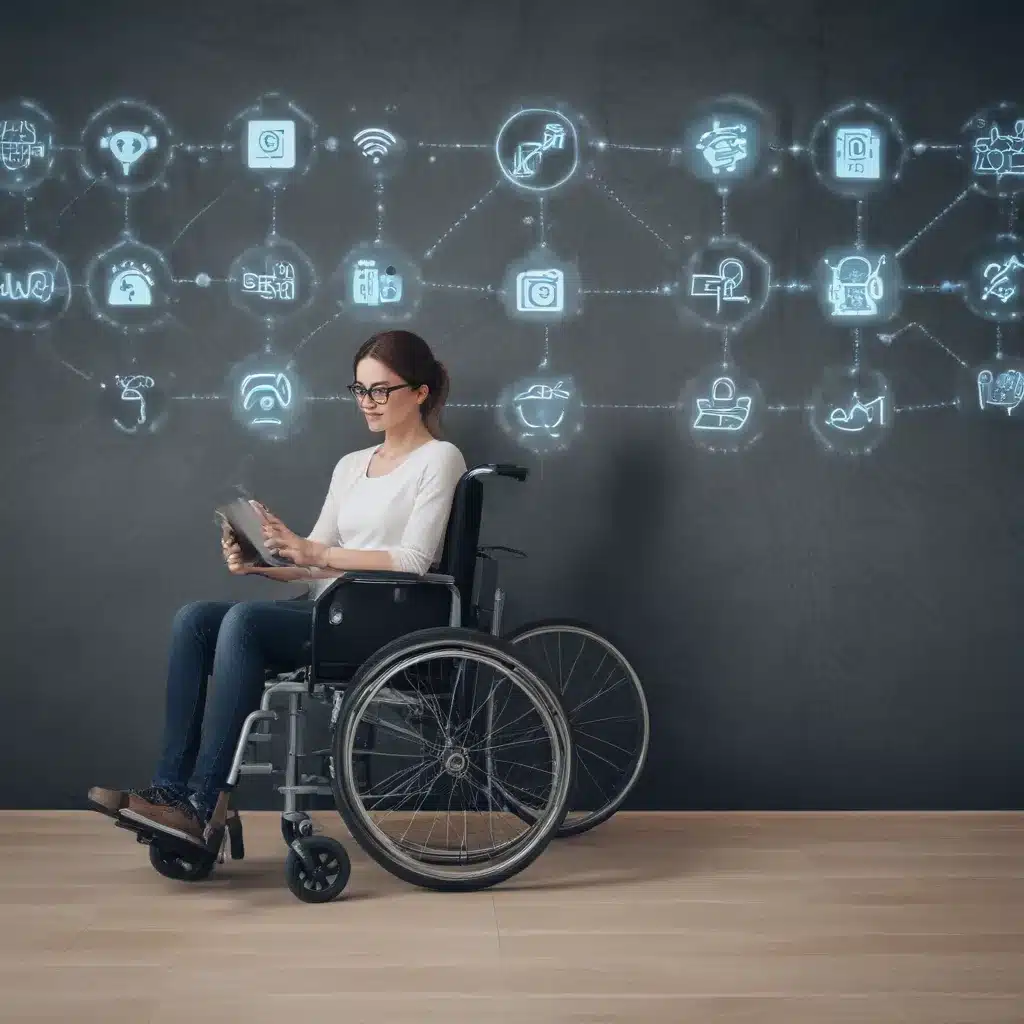In today’s increasingly connected world, the internet has become an integral part of our daily lives. From finding information to staying in touch with loved ones, the digital realm has revolutionized the way we interact with the world around us. But for individuals with disabilities, this technological revolution hasn’t always been a smooth ride. That is, until the emergence of the Internet of Things (IoT) – a phenomenon that just might be the key to unlocking a more accessible future for all.
Bridging the Digital Divide
It’s no secret that the digital landscape hasn’t always been the most inclusive place. [1] Millions of households and small businesses in the US still lack access to reliable high-speed internet, and even those who are connected often struggle with subpar or unreliable service. This gaping “digital divide” has had a disproportionate impact on individuals with disabilities, who often rely on technology to navigate their daily lives.
But there’s hope on the horizon. The Biden administration has recently announced the largest internet funding initiative in US history, pledging over $40 billion to connect everyone in America to affordable, high-speed internet by the end of the decade. [1] This monumental investment, combined with the rapid advancements in IoT technology, could be the catalyst we need to finally bridge the accessibility gap.
Unlocking the Power of IoT
The Internet of Things is a game-changing technology that has the potential to revolutionize the lives of individuals with disabilities. [4] From smart home devices that automate daily tasks to wearable tech that enhances mobility and communication, the IoT landscape is teeming with innovative solutions designed to empower those who have traditionally faced accessibility challenges.
Take the Ring Doorbell, for example. [4] This nifty little device not only allows users to see and communicate with visitors, but it can also send notifications directly to a smartphone – a game-changer for those with hearing impairments. Or consider Lechal’s smart insoles, which use GPS and vibration feedback to guide visually impaired individuals through their daily travels. [4] Even something as seemingly simple as a smart washing machine, capable of sending cycle updates to a user’s device, can make a world of difference for those with mobility issues.
And the possibilities don’t stop there. IoT-powered assistive technologies like Microsoft’s Seeing AI app, which can describe people and objects for the visually impaired, [4] are poised to become even more advanced and accessible as the technology continues to evolve. The future is brimming with potential, and the key to unlocking it lies in the transformative power of the Internet of Things.
Inclusive Design: The Road Ahead
Of course, the integration of IoT devices into the lives of individuals with disabilities is not without its challenges. [5] As with any new technology, there are concerns about security, privacy, and the overall user experience. But by actively involving the disability community in the design and testing process, tech companies can ensure that their IoT solutions are not only innovative but truly accessible and empowering.
“IoT is still a work in progress and will continue to evolve according to users’ needs – including the disabled community,” explains the team at Accessibility.com. [4] “By including people with disabilities in the designing and testing processes of IoT devices, businesses can make sure their devices are accessible and meet the needs of those who need these devices the most.”
As the IoT landscape continues to expand and evolve, it’s crucial that we prioritize inclusive design and accessibility from the ground up. Only then can we truly unlock the transformative power of this technology and create a more equitable, connected world for all.
Conclusion: A Future of Possibilities
The Internet of Things is more than just a buzzword – it’s a revolutionary technology that has the power to reshape the lives of individuals with disabilities. [4] From enhanced mobility and communication to greater independence and control over their environment, the IoT landscape is brimming with possibilities.
As we look to the future, it’s clear that the key to unlocking a more accessible world lies in the continued development and integration of IoT devices. With the support of initiatives like the Biden administration’s historic internet funding and a commitment to inclusive design, the possibilities are endless. So let’s embrace the power of IoT and work together to build a future where everyone, regardless of ability, can thrive in our increasingly connected world.
[1] “Fact Sheet: Biden-Harris Administration Announces Over $40 Billion to Connect Everyone in America to Affordable, Reliable High-Speed Internet”, The White House, 2023.
[2] “Can IoT Devices in a Separate VLAN Still Access a LAN?”, Reddit, 2021.
[3] “Broadband for Louisiana”, State of Louisiana, 2023.
[4] “How Internet of Things (IoT) Devices Can Improve Accessibility”, Accessibility.com, 2023.
[5] “5G: What Is 5G?”, Qualcomm, 2023.
[6] “Loss of Internet Access in Windows 11”, Microsoft Tech Community, 2023.
[7] “Internet of Things for Persons with Disabilities: A Systematic Review”, NCBI, 2022.
[8] “IoT Devices and Network Access”, TP-Link Community, 2023.













